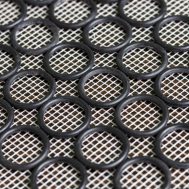As a critical parameter in rubber engineering, compression set impacts everything from seal longevity to overall system reliability. Let’s explore the science behind this phenomenon and why it matters for your applications.
What is Compression Set?
Compression set is a measurement of a rubber material’s ability to return to its original thickness after being compressed for a specific time and at a specific temperature. It’s expressed as a percentage — the lower the percentage is, the better the material’s recovery properties are.
Factors That Impact Compression Set
Several variables influence compression set behavior:
- Temperature: Higher temperatures accelerate compression set
- Time: Longer compression periods typically result in higher set values
- Compound formulation: Base polymer, fillers, and curatives all play crucial roles
- Compression ratio: The degree of deformation affects recovery potential
Testing and Measurement
ASTM D395 provides standardized methods for measuring compression set. Method B, using a compression fixture and controlled temperature chamber, is most common in industry specifications.
Practical Applications
Understanding compression set is essential when selecting materials for:
- Static seals in fluid systems
- Gaskets under constant compression
- O-Rings in valves and fittings
- Vibration isolation mounts
By selecting the right materials and understanding the science behind compression set, engineers can optimize their designs for longevity and performance, even in very demanding applications.
Questions about compression set? Reach out to Apple Rubber’s engineering team here!
